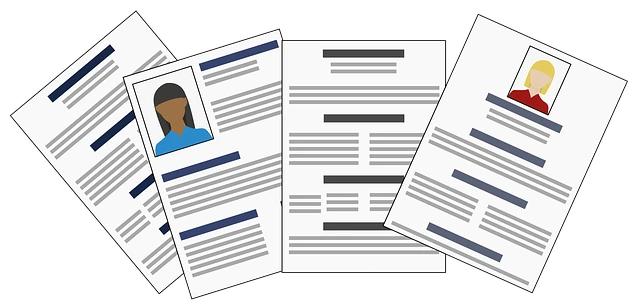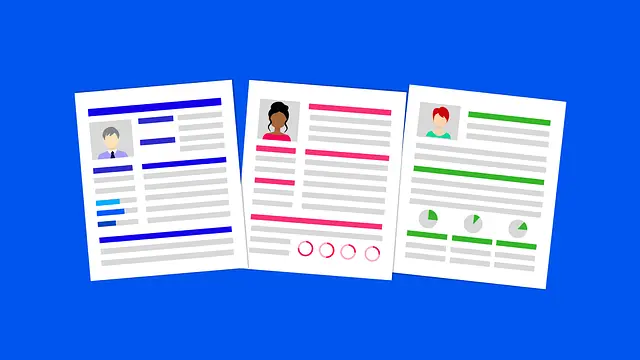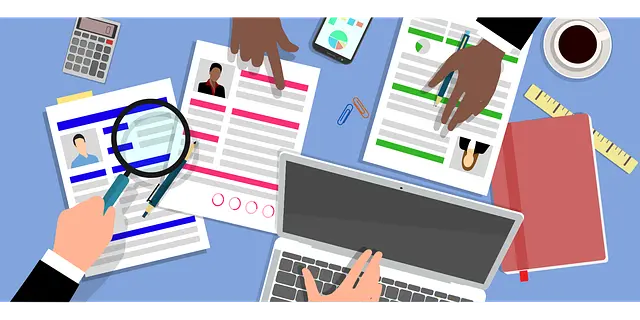how to get internship in USA for international students
As an international student, you may be eligible to participate in a internship program in the United States through a student visa. Here are some steps you can take to try to secure an internship in the US:

- Research potential internship opportunities: Look for companies or organizations that offer internships in your field of study or career interest. You can also check with your school’s career center or search online job boards and internship databases.
- Understand the requirements: Make sure you meet the eligibility requirements for the internship program, such as being enrolled in a degree program and having a valid student visa.
- Prepare your application materials: Gather all the necessary documents, such as your resume, transcripts, and letters of recommendation. Consider having your application materials reviewed by a career center or mentor to ensure they are competitive.
- Apply for the internship: Submit your application materials, including any required forms and documents, to the company or organization offering the internship.
- Obtain a student visa: If you are accepted into an internship program and need a visa to travel to the US, you will need to apply for a student visa through the US embassy or consulate in your home country.

It’s important to start your search early, as the process of securing an internship and obtaining a student visa can take several months. Good luck!
How to Research potential internship opportunities
There are several ways you can research potential internship opportunities in the United States:

- Check with your school’s career center: Many universities and colleges have career centers that offer resources and support for students seeking internships. They may have a database of current internship openings or be able to connect you with companies or organizations that are known to hire interns.
- Search online job boards and internship databases: There are many websites that list internships specifically for students, such as Internships.com, Indeed, and LinkedIn. You can use these sites to search for internships by location, field of study, or industry.
- Look for internships with companies or organizations in your field of interest: If you have a specific career or industry in mind, research companies or organizations in that field to see if they offer internships. You can also reach out to these companies directly to inquire about internship opportunities.
- Network with professionals in your field: Connect with professionals in your field of study or career interest through LinkedIn or other professional networking platforms. They may be able to provide information about internships or connect you with someone who can.
- Attend career fairs and networking events: Many universities and colleges host career fairs and networking events where you can meet with recruiters and learn about internship opportunities. These events can also be a good way to make connections and build your professional network.

It’s important to be proactive and persistent in your search for an internship. The more you research and connect with potential employers, the better your chances of finding an opportunity that fits your interests and goals.

Check with your school’s career center
Your school’s career center is a valuable resource for finding internships and other job opportunities. Here are some steps you can take to check with your school’s career center for internship opportunities:
- Find out what services are offered: Contact your school’s career center to learn about the services they offer to students seeking internships. These may include access to job boards, resume and cover letter review, and networking events.
- Attend career fairs and networking events: Many career centers host career fairs and networking events where you can meet with recruiters and learn about internship opportunities. Be sure to attend these events and take advantage of the chance to make connections and learn about opportunities.
- Utilize career center resources: Your school’s career center may have a database of current internship openings or be able to connect you with companies or organizations that are known to hire interns. Take advantage of these resources and be proactive in your search for an internship.
- Meet with a career counselor: Consider meeting with a career counselor at your school’s career center to discuss your internship goals and get guidance on how to achieve them. A career counselor can help you identify potential internship opportunities and provide guidance on the application process.
By checking with your school’s career center and utilizing the resources they offer, you can increase your chances of finding an internship that fits your interests and goals.
Search online job boards and internship databases
Online job boards and internship databases are a great resource for finding internship opportunities. Here are some steps you can take to search for internships using these resources:

- Identify relevant job boards and databases: There are many online job boards and internship databases that cater to different industries and types of internships. Identify the ones that are most relevant to your field and interests, and sign up for alerts or newsletters to stay updated on new opportunities.
- Use keywords to search for internships: When searching for internships online, use keywords that describe the type of internship you are looking for, such as the industry, location, or type of work. This will help you find relevant opportunities and narrow your search.
- Create a profile and upload your resume: Many job boards and internship databases allow you to create a profile and upload your resume, which makes it easier for employers to find you. Make sure your profile and resume are up-to-date and highlight your skills and experience relevant to the internships you are interested in.
- Apply for internships: Once you have identified a few internships that you are interested in, follow the application instructions provided by the employer. This may involve completing an online application form, submitting a resume and cover letter, or scheduling an interview.
By using online job boards and internship databases, you can increase your chances of finding an internship that fits your interests and goals. Be proactive in your search and consider using multiple resources to find opportunities.
Look for internships with companies in your field of interest
If you are interested in interning with a specific company or organization, there are several steps you can take to increase your chances of finding an internship with them:

- Research the company or organization: Learn as much as you can about the company or organization, including its mission, values, and culture. This will help you tailor your application materials and show that you are a good fit for the company.
- Check the company’s website: Many companies and organizations have information about internship opportunities on their website. Check the “careers” or “internships” section of the company’s website to see if they are currently offering internships.
- Network with employees: If you know someone who works at the company or organization, consider reaching out to them to ask about internship opportunities. They may be able to provide information about the internship program or refer you to the right person to speak with.
- Reach out to the company directly: If you can’t find information about internships on the company’s website, consider reaching out to the company directly to inquire about opportunities. You can send an email or letter expressing your interest and explaining why you would be a good fit for an internship.

By researching the company or organization and reaching out to them directly, you can increase your chances of finding an internship that aligns with your interests and goals. Be proactive and persistent in your efforts, and consider using multiple methods to find opportunities.
Network with professionals in your field
Networking with professionals in your field can be a valuable way to learn about internship opportunities and get advice on your career. Here are some steps you can take to network with professionals in your field:

- Identify professionals you want to connect with: Think about the people you admire in your field and the types of organizations you would like to work for. Make a list of these people and organizations and consider reaching out to them to build your network.
- Connect with professionals through social media: Many professionals use social media platforms like LinkedIn to connect with others in their field. Consider following or connecting with professionals you want to network with on these platforms.
- Attend industry events and conferences: Industry events and conferences are a great place to meet professionals in your field. Make an effort to attend these events and introduce yourself to people you would like to network with.
- Ask for informational interviews: Informational interviews are a way to learn more about a particular company, industry, or career path from someone who has firsthand experience. Consider reaching out to professionals in your field and asking for an informational interview to learn more about their career and get advice.

By building a network of professionals in your field, you can increase your chances of learning about internship opportunities and get valuable advice on your career. Be proactive in your efforts to network and make an effort to build genuine connections with people in your field.
Attend career fairs and networking events
Career fairs and networking events are a great way to meet professionals in your field and learn about internship opportunities. Here are some steps you can take to make the most of these events:
- Research the event: Find out as much as you can about the event, including the types of companies and organizations that will be attending and the types of positions they are hiring for. This will help you tailor your approach and make the most of your time at the event.
- Update your resume and cover letter: Bring copies of your resume and a tailored cover letter with you to the event. Make sure your resume is up-to-date and highlights your skills and experiences that are relevant to the types of internships you are interested in.
- Dress appropriately: Dress in business or business casual attire for the event. Avoid wearing casual or revealing clothing, as it may be seen as disrespectful.
- Introduce yourself: Make an effort to introduce yourself to professionals at the event. Be friendly and approachable, and make sure to have a clear and concise pitch about yourself and your interests.
- Follow up: After the event, follow up with any professionals you connected with. Thank them for their time and consider sending a copy of your resume or a LinkedIn connection request to keep in touch.
By attending career fairs and networking events and being proactive in building connections, you can increase your chances of finding an internship that fits your interests and goals. Good luck!
Understand the requirements
Understanding the requirements for an internship program is an important step in the application process. Here are some things to consider when trying to understand the requirements for an internship:
- Eligibility: Make sure you meet the basic eligibility requirements for the internship, such as being enrolled in a degree program, having a certain GPA, or being able to work legally in the United States (if you are an international student).
- Duration: Consider the duration of the internship, including how long it will last and how many hours you will be expected to work each week. Make sure you will be able to commit to the internship for the entire duration.
- Location: Consider the location of the internship and whether you will need to relocate or commute to the work site. If you are an international student, you will also need to consider whether you can obtain a student visa to work in the United States.
- Compensation: Determine whether the internship is paid or unpaid and whether you will receive any benefits, such as housing or travel expenses.
- Application materials: Review the application materials required for the internship, such as a resume, transcripts, and letters of recommendation. Make sure you have all the necessary documents and that they are up-to-date and accurate.
By understanding the requirements for an internship, you can ensure that you are well-prepared to apply and that the opportunity is a good fit for your goals and needs.
Prepare your application materials
Preparing your application materials is an important step in the process of applying for an internship. Here are some things to consider when preparing your application materials:
- Resume: Make sure your resume is up-to-date and tailored to the internship you are applying for. Include any relevant coursework, skills, and experience, and consider using action verbs to describe your responsibilities and achievements.
- Cover letter: A cover letter is a chance to introduce yourself to the employer and explain why you are interested in the internship. Make sure to tailor your cover letter to the specific internship and highlight any skills or experiences that make you a strong candidate.
- Transcripts: Many internship programs will require you to submit transcripts as part of your application. Make sure you have copies of your transcripts available and that they are up-to-date.
- Letters of recommendation: Some internship programs may ask for letters of recommendation from professors, advisors, or other professionals who can speak to your skills and abilities. Consider asking for letters from people who know you well and can provide specific examples of your strengths and achievements.
- Other materials: Depending on the internship program, you may be asked to submit other materials as part of your application, such as writing samples, portfolios, or test scores. Make sure you have these materials ready and that they are of high quality.
By preparing strong application materials, you can increase your chances of being selected for an internship. Consider having your materials reviewed by a career center or mentor to ensure they are competitive.
Prepare Resume
Your resume is an important tool for showcasing your skills and experiences to potential employers, including those offering internships. Here are some tips for preparing a strong resume:

- Tailor your resume to the internship: Make sure your resume is tailored to the specific internship you are applying for. This means highlighting the skills and experiences that are most relevant to the internship and using language and formatting that aligns with the internship requirements and the company’s culture.
- Use a clear and concise format: Use a clear and concise format for your resume, with headings and bullet points to highlight your achievements and experiences. Avoid using dense blocks of text or overly complex formatting.
- Focus on achievements: In addition to listing your responsibilities and tasks, make sure to highlight your achievements and results. Use concrete examples and quantify your accomplishments whenever possible.
- Use industry-specific language: Use industry-specific language and keywords on your resume to show that you are familiar with the field and have the skills and knowledge needed for the internship.
- Review and proofread: Make sure to review and proofread your resume carefully to catch any mistakes or typos. Consider having a friend or mentor review your resume as well to get feedback.
By following these tips and tailoring your resume to the specific internship you are applying for, you can create a strong resume that showcases your skills and experiences in the best possible light.

Prepare Cover letter
A cover letter is an important tool for introducing yourself to potential employers and explaining why you are a good fit for the internship. Here are some tips for preparing a strong cover letter:
- Tailor your cover letter to the internship: Make sure your cover letter is tailored to the specific internship you are applying for. This means using language and examples that align with the internship requirements and the company’s culture.
- Use a professional tone: Use a professional tone in your cover letter and avoid using overly casual language or slang.
- Address the employer directly: Address the employer directly in your cover letter and use their name if possible. This shows that you have taken the time to research the company and are interested in the specific internship they are offering.
- Explain why you are a good fit: In your cover letter, explain why you are a good fit for the internship. Use specific examples and achievements to demonstrate your skills and experience.
- Keep it concise: Keep your cover letter concise and to the point. Aim for one page or less, and focus on the most important information.

By following these tips and tailoring your cover letter to the specific internship you are applying for, you can create a strong cover letter that showcases your skills and experiences and demonstrates your fit for the internship.
Transcripts
Transcripts are official records of a student’s academic performance. They typically include information about the courses the student has taken, the grades they have received, and any degrees or awards they have earned. Transcripts are often required for college and university admissions, as well as for internships and jobs.
There are two types of transcripts: official transcripts and unofficial transcripts. Official transcripts are issued by the school and are typically sent directly to the recipient. They are often printed on special paper or have a seal or stamp to indicate their authenticity. Unofficial transcripts are typically issued by the student and are not considered as official as an official transcript.
To request transcripts, you will typically need to contact the registrar’s office at your school and provide your student ID number and other identifying information. Some schools may require a fee for transcripts, and it can take a few weeks for transcripts to be processed and sent.
It’s important to keep copies of your transcripts for your own records and to have them on hand when applying for internships or jobs. By having your transcripts readily available, you can demonstrate your academic accomplishments and qualifications to potential employers.
Letters of recommendation
Letters of recommendation are letters written by people who can speak to your skills, character, and qualifications. They are often used in the job and internship application process to provide additional information about an applicant and to support their application.
There are several types of letters of recommendation, including academic letters of recommendation, professional letters of recommendation, and personal letters of recommendation. Academic letters of recommendation are typically written by professors or academic advisors and focus on the applicant’s academic performance and potential. Professional letters of recommendation are written by current or former supervisors or colleagues and focus on the applicant’s professional skills and experiences. Personal letters of recommendation are written by friends, family members, or other personal contacts and focus on the applicant’s character and personal qualities.
To request a letter of recommendation, you will typically need to provide the person writing the letter with information about the internship or job you are applying for, as well as your resume and any other relevant materials. It’s important to give the person writing the letter plenty of time to complete the letter and to follow up if you don’t hear back from them.
Letters of recommendation can be a valuable addition to your internship or job application, as they provide insight into your skills and qualities from the perspective of someone who knows you well. By securing strong letters of recommendation, you can increase your chances of being considered for an internship or job.
Apply for the internship
Applying for an internship can be a competitive process, so it’s important to take the time to prepare a strong application. Here are some steps you can take to apply for an internship:
- Research the company or organization offering the internship: Learn as much as you can about the company or organization, including its mission, values, and culture. This will help you tailor your application materials and show that you are a good fit for the company.
- Review the application instructions: Make sure you understand the application process and requirements for the internship, including any deadlines and necessary materials.
- Prepare your application materials: Gather all the necessary documents, such as your resume, cover letter, transcripts, and letters of recommendation. Make sure these materials are up-to-date and tailored to the internship you are applying for.
- Submit your application: Follow the instructions provided by the company or organization to submit your application materials. This may involve filling out an online application form or sending your materials via email or mail.
- Follow up: After you have submitted your application, consider following up with the company or organization to express your continued interest in the internship and to confirm that your application has been received.
By following these steps and putting your best foot forward in your application, you can increase your chances of being selected for an internship. Good luck!
Obtain a student visa
If you are an international student and have been accepted into an internship program in the United States, you will need to obtain a student visa in order to participate. Here are some steps you can take to apply for a student visa:
- Determine the type of student visa you need: There are several types of student visas available for international students, including the F-1 visa for academic students and the J-1 visa for exchange visitors. Make sure you understand the requirements and limitations of the visa you need.
- Gather required documents: You will need to provide certain documents as part of your student visa application, including a passport, proof of financial support, and proof of acceptance into an academic program or exchange visitor program. Make sure you have all the necessary documents and that they are up-to-date and accurate.
- Complete the visa application: You will need to complete the online visa application form (DS-160) and pay the visa application fee.
- Schedule an interview: After you have completed the visa application, you will need to schedule an interview at a US embassy or consulate in your home country. You will need to bring all the necessary documents with you to the interview.
- Attend the interview: During the interview, you will be asked questions about your academic and financial plans in the United States. You may also be asked about your background and motivation for studying in the US.
- Wait for a decision: After the interview, your application will be reviewed and a decision will be made on your visa. If your visa is approved, you will be issued a visa stamp in your passport.
Obtaining a student visa can be a complex process, so it’s important to start the process early and be prepared. Good luck!
Determine the type of student visa you need
As an international student, you will need to determine the type of student visa you need in order to participate in an internship program in the United States. There are several types of student visas available, including the following:
- F-1 visa: The F-1 visa is for academic students who are enrolled in a full-time degree program at a college or university in the United States. If you are participating in an internship as part of your degree program, you may be eligible for an F-1 visa.
- J-1 visa: The J-1 visa is for exchange visitors, including students participating in internships, trainee programs, or other educational exchange programs. If you are participating in an internship as part of an exchange visitor program, you may be eligible for a J-1 visa.
It’s important to understand the requirements and limitations of each type of student visa, as well as any restrictions on the type of work you can do while in the United States. You should also be aware of any deadlines or other requirements for applying for the visa.
To determine the type of student visa you need, you should review the requirements for the internship program and consult with your school’s international student office or the embassy or consulate of the United States in your home country. They can provide guidance on the type of visa that is most appropriate for your situation.
Gather required documents
As part of the process of applying for a student visa, you will need to gather several required documents. These may include the following:
- Passport: You will need a valid passport to apply for a student visa. Make sure your passport is not set to expire within six months of your planned arrival in the United States.
- Form DS-160: You will need to complete the online visa application form (DS-160). This form requires personal and educational information, as well as details about your plans for studying in the United States.
- Proof of financial support: You will need to provide proof of financial support, such as bank statements or a letter from a sponsor, to show that you have the funds to cover your tuition, living expenses, and other costs while in the United States.
- Proof of acceptance into an academic program or exchange visitor program: You will need to provide proof of acceptance into an academic program or exchange visitor program, such as a letter of acceptance from your school or sponsoring organization.
- Test scores: Depending on the type of student visa you are applying for, you may need to provide test scores, such as TOEFL or IELTS scores, to demonstrate your English language proficiency.
- Transcripts: You may need to provide transcripts from your previous academic studies as part of your student visa application.
It’s important to gather all the required documents before you apply for a student visa, as the application process can be time-consuming and you may need to submit your materials in a timely manner. Make sure all your documents are up-to-date and accurate.
Complete the visa application
To complete the visa application process, you will need to follow these steps:
- Go to the US Department of State website: To apply for a student visa, you will need to visit the US Department of State website and create an account.
- Complete the online visa application form (DS-160): You will need to complete the online visa application form (DS-160) and upload a recent photograph of yourself. Make sure you provide accurate and complete information, as any discrepancies could delay the processing of your application.
- Pay the visa application fee: You will need to pay the visa application fee, which is currently $160 for most student visas. You can pay the fee online using a credit card or bank transfer.
- Schedule an interview: After you have completed the visa application and paid the fee, you will need to schedule an interview at a US embassy or consulate in your home country. You will need to bring all the required documents with you to the interview.
- Attend the interview: During the interview, you will be asked questions about your academic and financial plans in the United States. You may also be asked about your background and motivation for studying in the US.
- Wait for a decision: After the interview, your application will be reviewed and a decision will be made on your visa. If your visa is approved, you will be issued a visa stamp in your passport.
It’s important to complete the visa application process as soon as possible, as the process can take several months. Make sure you follow all the instructions and provide all the required documents to ensure a smooth and successful application process.
Schedule an interview
After you have completed the visa application form (DS-160) and paid the visa application fee, you will need to schedule an interview at a US embassy or consulate in your home country. Here are some steps you can take to schedule an interview:

- Check the availability of interview appointments: Check the availability of interview appointments at the embassy or consulate where you will be applying. These appointments can fill up quickly, so it’s important to schedule your interview as soon as possible.
- Register for an account with the embassy or consulate: In order to schedule an interview, you may need to register for an account with the embassy or consulate where you will be applying. This will allow you to access the appointment scheduling system and schedule your interview.
- Schedule the interview: Follow the instructions provided by the embassy or consulate to schedule your interview. You may need to provide certain information, such as your passport number and the visa category for which you are applying.
- Confirm the appointment: Make sure you confirm the details of your appointment, including the date, time, and location of the interview. You should also make arrangements for transportation to the embassy or consulate on the day of the interview.
- Prepare for the interview: Review the documents you need to bring to the interview and make sure you have all the necessary materials. You should also practice answering common interview questions to prepare for the interview.
By following these steps, you can schedule an interview at a US embassy or consulate and be well-prepared for the interview process.
Attend the interview
Attending the interview is an important step in the process of applying for a student visa. Here are some things to keep in mind as you prepare for your interview:

- Arrive on time: Make sure you arrive at the embassy or consulate on time for your interview. If you are late, you may not be allowed to enter the embassy or consulate and may need to reschedule your appointment.
- Bring all required documents: Make sure you have all the required documents with you, including your passport, visa application fee receipt, and any other documents requested by the embassy or consulate.
- Dress appropriately: Wear business or business casual attire to the interview. Avoid wearing casual or revealing clothing, as it may be seen as disrespectful.
- Be honest and respectful: During the interview, you will be asked questions about your academic and financial plans in the United States. Be honest in your answers and treat the interviewer with respect.
- Listen carefully: Pay attention to the questions being asked and make sure you understand what is being asked of you. If you don’t understand a question, ask for clarification.

By following these tips and being prepared for the interview, you can increase your chances of being granted a student visa. Good luck!
Wait for a decision
After you have attended your student visa interview, you will need to wait for a decision on your application. Here are some things to consider as you wait for a decision:
- Check the status of your application: You may be able to check the status of your application online or by contacting the embassy or consulate where you applied.
- Prepare for additional processing: Depending on the circumstances of your application, you may need to undergo additional processing before a decision is made on your visa. This could include a security check or further review of your documents.
- Be patient: The visa application process can take several weeks or even months, so it’s important to be patient and not to contact the embassy or consulate excessively.
- Consider your options: If your visa is denied, you may be able to appeal the decision or reapply for a visa. Consult with an immigration attorney or the embassy or consulate for guidance on your options.
- Make plans: If your visa is approved, you can begin making plans for your trip to the United States. This may include arranging for housing, enrolling in classes, and making travel arrangements.
By being patient and preparing for the possibility of additional processing or a denied application, you can navigate the visa application process with confidence. Good luck!